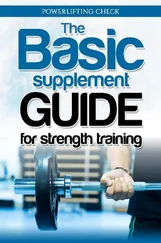✓ Better able to adjust to changes
» Being strong in your body and mind helps you deal with all the changes in your life, retirement, the death of friends or loved ones, health issues, and more.
The bottom line? Exercise is one of the only things you can do for about 10 to 30 minutes a day that can help every part of your brain, cardiovascular system, pulmonary system, sleep, weight management, blood glucose, energy, mood, strength, sex life, and stamina all while helping you feel more confident, empowered, and independent.
Isn’t that time much better spent exercising than in a doctor’s office? Definitely!
Chapter 3
Getting and Staying Motivated to Exercise
There’s no question that exercise is good for us. There is no shortage of evidence that moving more enhances so many aspects of our lives, both physically and psychologically. In fact, many doctors even prescribe it much like they would a pill because they know exercise can:
✓ Lower blood pressure
✓ Improve sleep
✓ Improve your sex life
✓ Ease depression and anxiety
✓ Improve heart health
✓ Help prevent or manage certain types of cancer
✓ Increase confidence
✓ Help you lose weight and avoid things like diabetes and metabolic syndrome
And of course, there’s more that exercise can do for us. The interesting thing is, all of that knowledge doesn’t make actually doing the workouts any easier. Just because something is good for us doesn’t mean we automatically do it.
We all know that eating lots of fruits and veggies is good for us, but that doesn’t mean those are the first things we reach for when we want a snack.
It seems like motivation should just be baked into our bones but, as humans, we are always looking for the easy way out, which means we want to do the least amount of work for the greatest rewards. Makes sense, right?
But exercise can seem like work, which is why many of us avoid it, even knowing the benefits, but there are ways we can use it to our advantage so that it’s worth all the effort.
This is where we have to create our own motivation and that often starts with an action rather than a desire.
DIFFERENT TYPES OF MOTIVATION
Motivation comes from a variety of different areas, but we can look at them through two different levels: intrinsic, meaning what comes from inside and extrinsic, which is what drives us from outside ourselves.
INTRINSIC MOTIVATION
One of the ways we motivate ourselves is by having something inside that pushes us to reach outside goals, and often this involves things we enjoy. This could be something we want to accomplish, a competitive edge, or something that will give us pleasure and satisfaction to complete.
For some people exercise is a goal in and of itself. But for others, exercise isn’t the end goal we strive for. That doesn’t mean we don’t want to be healthy, it just means that we want to achieve goals based on our interests, what we enjoy, and what’s meaningful to us.
This might mean wanting to be strong for things like gardening, playing with our kids or grandkids, or functioning better when going about the daily activities of life.
Intrinsic goals are ones that motivate from the inside—we strive for something and then we make it happen.
Some exercise-related intrinsic goals might include:
✓ Walking on a regular basis so you can keep up your endurance with your gardening or chores
✓ Playing games with your kids or grandkids for just for fun
✓ Wanting to stay strong to up keep up with your physical hobbies
✓ Wanting to compete in something like a local race for fun and/or charity or a loved one
These are goals we like, that we find interesting, and we get something back from them that is important to us.
Think of someone who gets a diagnosis of breast cancer or some other illness that suddenly changes their lives. This might be the impetus they need to live more healthfully simply because they want to feel better and make a difference in the outcome of their illness.
That kind of internal goal is wonderful and it can drive a variety of behaviors, but it isn’t the only way we motivate ourselves. There are other ways to keep us going to reach our goals and, for many of us, those external goals that drive us the most.
EXTRINSIC MOTIVATION
Here’s something most of us know, even if we don’t want to admit it: Exercise, in and of itself, isn’t always a goal we strive for. We know it’s good for us. We know we need it . . . but, like choosing broccoli over over macaroni and cheese, it’s not always our first choice.
That’s where a different type of motivation comes in, the kind that comes from the outside. It’s great to have internal goals to drive us, but there are external forces that also motivate us to make a change.
Making use of both of these types of motivation can make regular exercise much more of a reality.
The reality is that most of us rely on a certain amount of extrinsic motivation including:
✓ Losing weight
✓ Being healthy
✓ Making a loved one happy
✓ Looking better
✓ Meeting new people
✓ Fitting into smaller-sized clothing
✓ Just feeling good about ourselves
Often it’s a mix of intrinsic and extrinsic motivational factors that get us moving and, frankly, it doesn’t matter what works… as long as it gets you moving. One day it may be about losing weight and another day it might be about being healthy. Whatever reason you find, it’s a good one.
The real key is knowing that you are the one who finds the reason rather than waiting for it to come to you. Most of us don’t wake up excited to exercise, right? But most of us will have obstacles in our way. Identifying these obstacles is the first step towards… well, taking that first step.
BARRIERS TO CHANGE
Now we get to the bottom of it, the reasons many of us come up with to avoid exercise and this is an area many of us are very, very good at. Whether you call them “reasons” or “excuses,” they typically amount to the same thing—obstacles.
There are plenty of reasons we avoid exercise, and some of them are very good reasons. But, others we can find a way to work around with a little forethought.
FEAR OF INJURY
Fear of hurting yourself is a healthy fear and one that keeps us safe from a variety of injuries in different aspects of life. But then there’s exercise, an endeavor that can involve heavy weights and those of us moving them around in different directions, sometimes without any idea what we’re doing.
That’s where this program can help. Not only do we explain every movement, we teach you how to ease your way into each exercise so you have time to practice and perfect the movement.
There’s a built-in learning period where you have time to pay attention to how your body responds to different exercises and adjust accordingly. There are also other things you can do to feel more comfortable:
a.See your doctor: You hear this all the time from commercials, but that is literally what your doctor is there for. If you have any concerns, write them down and ask about each one. It’s okay to be fully invested in your health and walk into an exercise program with confidence.
b.Err on the side of caution: If you’re not sure about something, skip it. I’ve worked with a variety of clients and if they feel anything strange about what they’re doing, we stop. There are so many exercises out there, there is always a substitution.
c.Listen to your body: I say this a lot to clients, but it bears repeating. No one knows your body better than you. While you don’t want to be so cautious that you don’t try anything new, there’s a middle ground to shoot for.
Читать дальше












